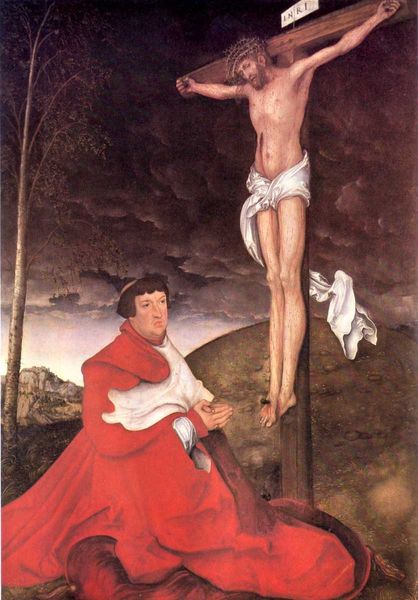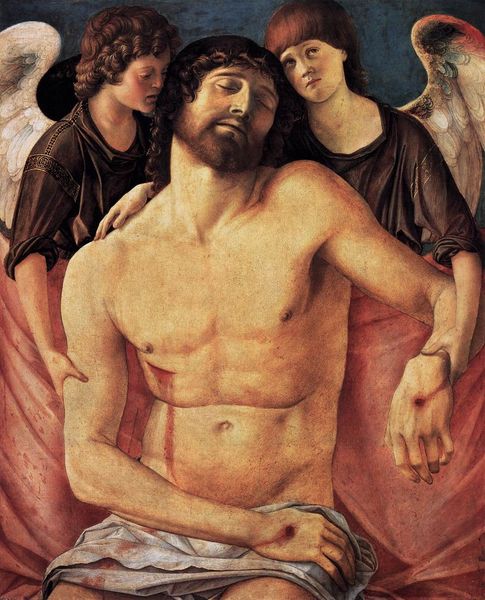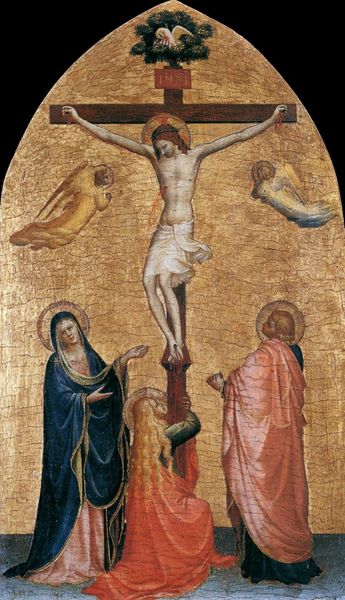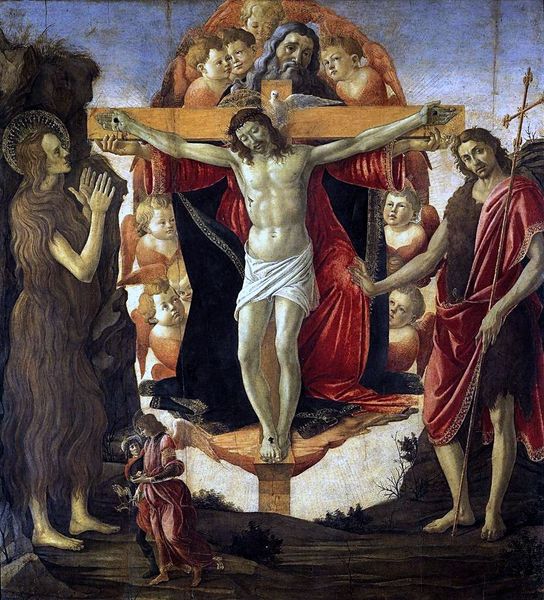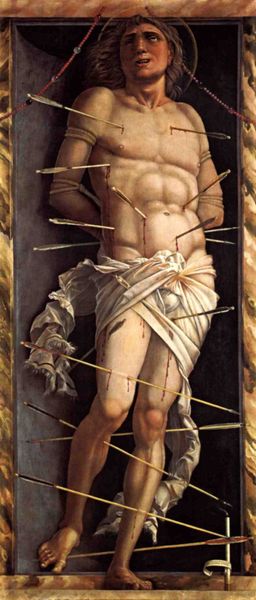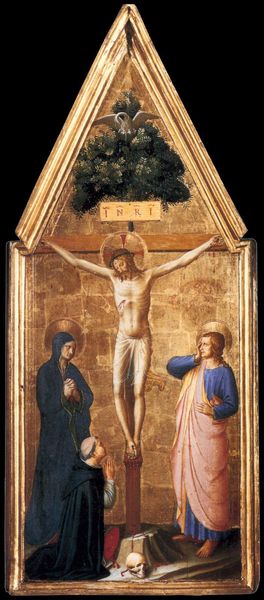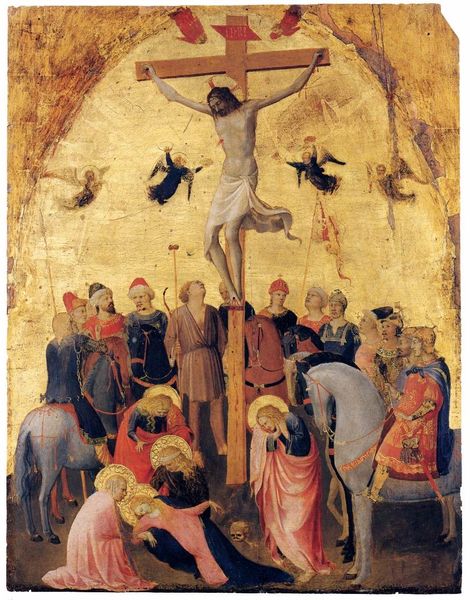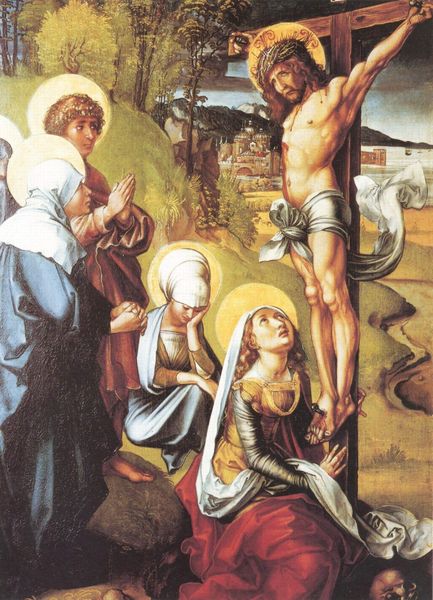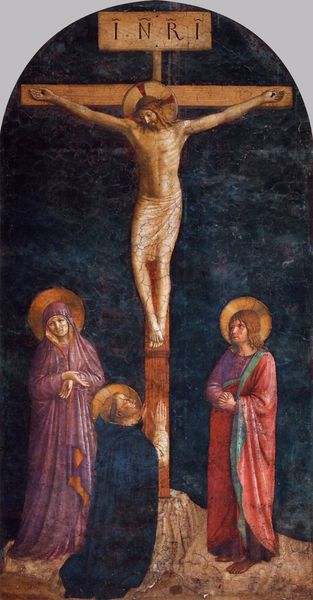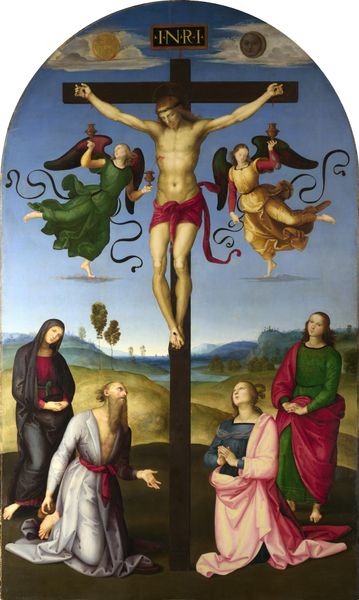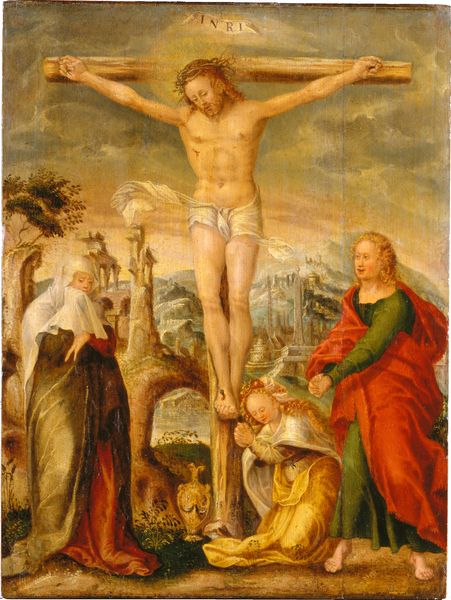
The Bad Thief to the Left of Christ; former exterior wing of the triptych: Saint John the Baptist (fragment) c. 1430
0:00
0:00
painting, oil-paint, fresco
#
medieval
#
painting
#
oil-paint
#
figuration
#
fresco
#
oil painting
#
chiaroscuro
#
christianity
#
crucifixion
#
history-painting
#
nude
#
early-renaissance
#
realism
#
christ
Dimensions: 134.2 x 92.5 x min. 1.1 cm
Copyright: Public Domain
Editor: This panel, "The Bad Thief to the Left of Christ," a fragment of a triptych by Robert Campin from around 1430, really strikes me with its stark realism. The use of oil paint seems to almost amplify the suffering depicted. How would you interpret the creation of this piece within its material and social context? Curator: For me, it’s all about labor and materials. Oil paint itself was a relatively new and prized material at this time, lending a remarkable degree of realism. The gold background, probably applied by a specialized workshop, contrasts starkly with the unflinching depiction of the thief’s tortured body, bound by coarse rope. The commission itself speaks volumes about the patron’s status and desire for a specific type of devotional object. Notice how the commissioners used specific colors to indicate social stature. Editor: So you see the raw materiality of the work, the gold and oil paint, juxtaposed against the brutal reality of the subject, the tortured thief. It's almost a commentary on the disparities of wealth and suffering in society. Is there also commentary on the role and materiality of tools for inflicting harm through things like ropes? Curator: Precisely. Think about the labor involved in acquiring and preparing the materials, contrasting with the crude tools used to inflict pain. The ropes, the rough-hewn cross, even the pigments – they all had a source, a cost, and a handler. The artist may be posing questions around this division and the societal values which justify it. Do you think it challenges established societal positions around class structures? Editor: I see your point. By focusing on the materials and labor, the painting isn't just about religious narrative; it's a tangible artifact reflecting the economic and social structures of the time. Thank you. Curator: Indeed. By looking at the "how" and "what" of its making, we gain a powerful insight into the world that created it. It adds to my analysis. Editor: I completely agree, looking into its construction is very important to understand Campin's "The Bad Thief." Thanks again.
Comments
Join the conversation
Join millions of artists and users on Artera today and experience the ultimate creative platform.
